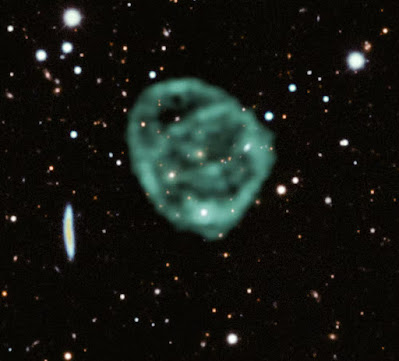I hate it when popular media reports on science stories with headlines like, "New Discovery Has Researchers Stumped!" and "This Will Rewrite Every Textbook On The Subject!" and "Recent Find Sends Scientists Back To The Drawing Board!"
The truth is that it's very seldom that real, honest-to-goodness paradigm shifts happen in science. We've been at this long enough that most of the basic theory, in just about every branch of science, is on rock-solid footing. It's highly doubtful that much of anything will "rewrite all the textbooks," and as far as the last one, I tend to agree with eminent astrophysicist Neil deGrasse Tyson. "As scientists, we're always at the drawing board. If you're not at the drawing board, you're not doing science."
As we've seen over the last few days' posts, however, that doesn't mean the experts have everything figured out. Even if the overall edifice of science is on a firm enough foundation that it's doubtful it'll ever be significantly overturned, there's still plenty of area to explore around what NdGT calls "the perimeter of our ignorance."
So appropriately enough, given our recent theme of "Stuff We Haven't Figured Out Yet," today we're going to look at three recently discovered astronomical phenomena that thus far, have eluded astrophysicists' best attempts at an explanation.
First, we have the aptly-named odd radio circles that were discovered through work at the Australian Square Kilometre Array Pathfinder Telescope (ASKAP). These structures, which "do not seem to correspond to any... known object or artefact," resemble gossamer soap bubbles in space, glowing faintly in the radio region of the electromagnetic spectrum (thus the name). As far as astronomers have found, none of them seem to have anything at the center, which seems to rule out something like a planetary nebula, which is the (usually) spherical shell of ionized gas blown off the surface of a red giant star as it nears the end of its life.
Thus far, five odd radio circles have been identified, but astrophysicists have no good explanation of how they form.
Second, we have high energy neutrino bursts. You probably know that neutrinos are tiny, electrically-neutral particles with such a vanishingly small rest mass that they almost never interact with matter at all. As you read that last sentence, literally billions of neutrinos went right through you, and very likely not a single one affected any of your atoms in the slightest.
So as you might imagine, studying such an aloof particle isn't easy. But that's exactly what the IceCube Neutrino Observatory at Amundsen-Scott South Pole Station in Antarctica does -- uses highly sensitive detectors, dropped into deep holes bored into the Antarctic ice sheet, to catch the elusive motes of energy when they do interact with the matter they're flying through.
And at IceCube, they found twenty-eight separate events that defy explanation -- neutrinos that carried an astonishing energy of 50 trillion electron volts. "The events cannot be explained by other neutrino fluxes, such as those from atmospheric neutrinos, nor by other high-energy events, such as muons produced by the interaction of cosmic rays in the atmosphere," the researchers said. "The neutrinos are known to be extra-galactic in origin, and reach such extreme energies that, according to current physics, they must be generated in the equivalent of a huge-scale natural particle accelerator of some kind -- possibly black-hole driven."
But what process could give neutrinos such ridiculously high energies is thus far unknown.
If that's not extreme enough for you, consider a newly-discovered class of astronomical objects called fast blue optical transients. FBOTs, as they're called, create sudden bursts of energy peaking in the blue region of the visible light spectrum, but (true to their name) fade almost as soon as they peak. This makes spotting them tricky; you have to have your telescope pointing exactly the right direction at exactly the right time to see them. The result is that only three have been observed thus far, but what we've seen is nothing short of astonishing.
FBOTs are high on the list of the most energetic phenomena ever studied. In a fraction of a second, they eject material with a mass of around one-tenth that of the Sun -- at a velocity of 55% of the speed of light. The study, which appeared in Astrophysical Journal Letters, reflects how hard it is to talk about these things without lapsing into superlatives.
"This was unexpected," said Northwestern University's Deanne Coppejans, first author of the study, which is such an understatement it's kind of funny. "We know of energetic explosions that can eject material at almost the speed of light, specifically gamma ray bursts, but they only launch a small amount of mass -- about one millionth the mass of the sun. CSS161010 [one of the FBOTs Coppejans and her team studied] launched between one and ten percent the mass of the Sun at more than half the speed of light -- evidence that this is a new class of transient."****************************************


No comments:
Post a Comment